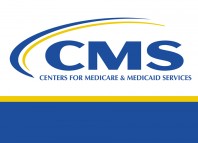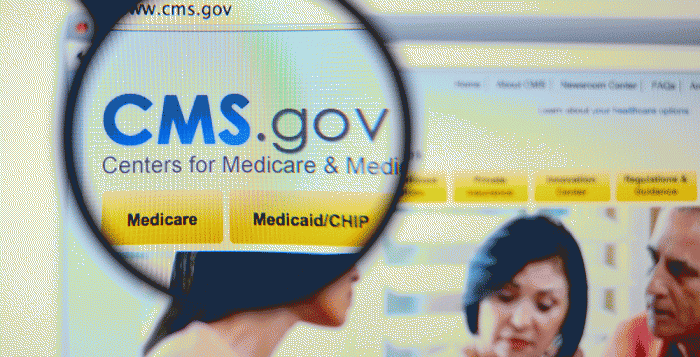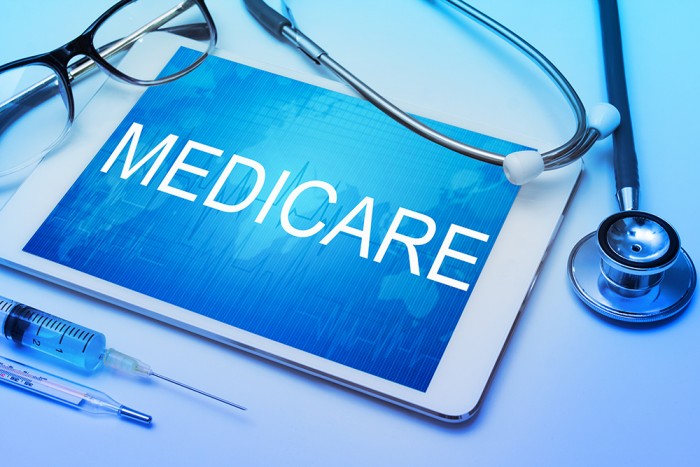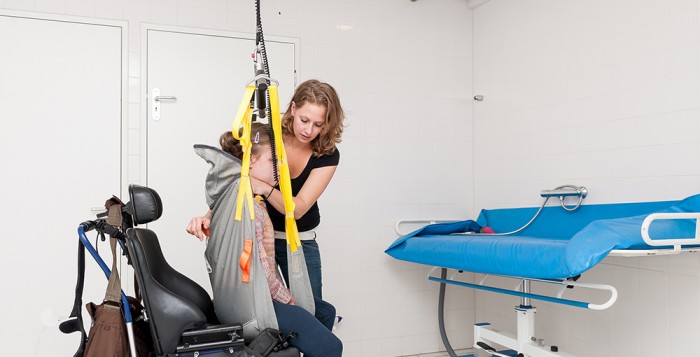On November 13, 2017, the Centers for Medicare and Medicaid Services (CMS) began to post a list of potential audits for Recovery Audit Contractors (RACs) to review. The topics will be listed, on a monthly basis, on the Provider Resources page of the CMS website. The topics currently proposed include: review of pre-admission screening, post-admission examination, and other requirements for inpatient rehabilitation facility (IRF) stays. The review type is identified as a “complex review.” Comments or questions should be submitted via email.
centers for medicare and medicaid services
CMS Releases CY 2018 Updates to Quality Payment Program
The Centers for Medicare and Medicaid Services (CMS) released the calendar year (CY) 2018 updates to the Quality Payment Program (QPP) via a final rule with comment period.
Established by the Medicare Access and CHIP Reauthorization Act of 2015 (MACRA), the QPP has the goal to incentivize physicians and other eligible clinicians by rewarding value and outcomes through either the Merit-based Incentive Payment System (MIPS) or Advanced Alternative Payment Models (APMs).
Some of the provisions contained in the final rule include:
- Weighting the MIPS cost performance category to 10 percent of total MIPS final score, and the Quality performance category to 50 percent;
- Raising the MIPS performance threshold to 15 points in Year 2 (from 3 points in the transition year);
- Awarding up to 5 bonus points on MIPS final score for treatment of complex patients;
- Adding 5 bonus points to the MIPS final scores of small practices;
- Adding Virtual Groups as a participation option for MIPS;
- Issuing an interim final rule with comment period for extreme and uncontrollable circumstances where clinicians can be automatically exempt from these categories in the transition year without submitting a hardship exception application if they have been affected by the hurricanes that occurred during the 2017 MIPS performance period;
- Providing more detail on how eligible clinicians participating in selected APMs (known as MIPS APMs) will be assessed under the APM scoring standard; and
- Creating additional flexibilities to allow clinicians to be successful under the All Payer Combination Option, which will be available beginning in performance year 2019.
The final rule will be published in the November 16, 2017 Federal Register, with comments due by January 1, 2018.
Additional information is available in a fact sheet and an Executive Summary document. In addition, CMS will conduct an overview webinar on Tuesday, November 14, 2017, from 1:00 pm to 2:30 pm. To participate in this webinar, registration is required.
CY 2018 Medicare Physician Fee Schedule Final Rule
On November 3, 2017, the Centers for Medicare and Medicaid Services (CMS) released the calendar year (CY) 2018 Medicare Physician Fee Schedule final rule. The proposed rule updates payment policies, payment rates, and quality provisions for services with an overall payment update of .41 percent.
Some of the key provisions finalized in the rule include:
- Addition of several codes to the list of telehealth services, eliminating the required reporting of the telehealth modifier GT for professional claims in an effort to reduce administrative burden for practitioners, and separating payment for CPT code 99091, which describes certain remote patient monitoring, for 2018;
- Adoption of CPT codes for CY 2018 for reporting several care management services currently reported using Medicare G-codes and clarifying a few policies regarding chronic care management;
- Increase in payment rates for office-based behavioral health services that better recognizes overhead expenses for office-based face-to-face services with a patient;
- Revision of Part B drug payments for infusion drugs furnished through an item of durable medical equipment (DME) to conform with requirements of the 21st Century Cures Act;
- Revision of payment for chronic care management in Rural Health Clinics (RHCs) and Federally-Qualified Health Centers (FQHCs), and establishing requirements and payment for RHCs and FQHCs furnishing general behavioral health integration (BHI) services and psychiatric collaborative care model (CoCM) services;
- Implementation of the Medicare Diabetes Prevention Program (MDPP) expanded model starting in 2018;
- Change to the current Physician Quality Reporting System (PQRS) program policy that requires reporting of 9 measures across 3 National Quality Strategy domains to only require reporting of 6 measures for the PQRS with no domain requirement; and
- Revision to the rules for accountable care organizations (ACOs) participating in the Medicare Shared Savings Program to reduce burden and streamline program operations.
In addition, CMS indicated they will continue to consider the following based on comments from stakeholders:
- Stakeholder input in response to the proposed rule’s comment solicitation on how CMS could expand access to telehealth services, within the current statutory authority;
- Reviewing and updating “outdated” Evaluation and Management (E/M) visit codes; and
- Reviewing stakeholders’ comments for potential future rulemaking or publication of sub-regulatory guidance pertaining to the Clinical Laboratory Fee Schedule (CLFS) data collection and reporting periods.
The final rule will be published in the November 15, 2017 Federal Register.
CMS Requests Input on Enhancements to Star Rating Methodology
The Centers for Medicare and Medicaid Services (CMS) has contracted with the Center for Outcomes Research and Evaluation (CORE) to re-evaluate the Overall Hospital Quality Star Rating on CMS’ hospital quality website, Hospital Compare. The goal of the Overall Hospital Quality Star Rating project is to improve the usability, accessibility, and interpretability of this website for patients and consumers.
CMS and the development team are seeking stakeholder input on several methodology reevaluation items designed to enhance the Overall Star Rating methodology. This public input period aims to highlight technical and policy considerations for the public. While the team has evaluated several methodological enhancements and continues to evaluate others, this public input period is designed to solicit specific feedback on the content, enhancements listed, as well as topics in active re-evaluation.
Members are encouraged to review the document thoroughly and provide feedback by close of business on Wednesday, September 27, 2017 via email.
Upcoming Call on IMPACT Act: Medicare Spending Per Beneficiary Measures
The Centers for Medicare and Medicaid Services (CMS) and measure developers will host an upcoming call on Wednesday, September 6, 2017, from 1:30 pm to 3:00 pm that will focus on the IMPACT Act’s adopted Medicare Spending per Beneficiary Post-Acute Care (PAC) resource use measures. The call will focus on the components of each measure, as well as public reporting.
The IMPACT Act of 2014 requires the development of resource use measures for PAC providers, including inpatient rehabilitation facilities (IRFs), skilled nursing facilities (SNFs), home health agencies (HHAs), and long-term care hospitals (LTCHs).
A question and answer session will follow the presentation. To participate in the call, please register here.
Jimmo Settlement Agreement Web Page Launched
The Centers for Medicare and Medicaid Services (CMS) has launched the Jimmo Settlement Agreement web page. This web page provides access, in one location, to various public documents and resources related to the Jimmo Settlement Agreement, including a Frequently Asked Questions (FAQs) link.
Background on Settlement Agreement:
On January 24, 2013, the US District Court for the District of Vermont approved a settlement agreement in the case of Jimmo v. Sebelius, in which the plaintiffs alleged that Medicare contractors were inappropriately applying an “Improvement Standard” in making claims determinations for Medicare coverage involving skilled care (e.g., the skilled nursing facility (SNF), home health (HH), and outpatient therapy (OPT) benefits). The settlement agreement sets forth a series of specific steps for CMS to undertake, including issuing clarifications to existing program guidance and new educational material on this subject. The goal of this settlement agreement is to ensure that claims are correctly adjudicated in accordance with existing Medicare policy, so that Medicare beneficiaries receive the full coverage to which they are entitled.
The Jimmo Settlement Agreement may reflect a change in practice for those providers and contractors who may have erroneously believed that the Medicare program covers nursing and therapy services under these benefits only when a beneficiary is expected to improve. The Settlement Agreement is consistent with the Medicare program’s regulations governing maintenance nursing and therapy in skilled nursing facilities, home health services, and outpatient therapy (physical, occupational, and speech) and nursing and therapy in inpatient rehabilitation hospitals for beneficiaries who need the level of care that such hospitals provide.
CMS Proposes Cancellation of Cardiac, Orthopedic Bundled Payment Models
The Centers for Medicare and Medicaid Services (CMS) has submitted a proposed rule (“Cancellation of Advancing Care Coordination through Episode Payment and Cardiac Rehabilitation Incentive Payment Models; Changes to Comprehensive Care for Joint Replacement Payment Model”) to the Office of Management and Budget (OMB). The proposed rule is currently pending regulatory review.
Included in the proposed rule is the reduction of the number of mandatory geographic areas participating in the Center for Medicare and Medicaid Innovation’s (CMMI’s) Comprehensive Care for Joint Replacement (CJR) model from 67 to 34. In addition, CMS proposes to allow CJR participants in the 33 remaining areas to participate on a voluntary basis. In this rule, CMS also proposes to make participation in the CJR model voluntary for all low volume and rural hospitals in all of the CJR geographic areas.
CMS also is proposing through this rule to cancel the Episode Payment Models (EPMs) and the Cardiac Rehabilitation (CR) incentive payment model, which were scheduled to begin on January 1, 2018.
The proposed rule (CMS-5524-P) will be published in the Federal Register. Public comments will be due by October 16, 2017.
CMS Issues FY 2018 IRF PPS Final Rule
On July 31, 2017, the Centers for Medicare and Medicaid Services (CMS) released the fiscal year (FY) 2018 inpatient rehabilitation facility prospective payment system (IRF PPS) final rule. Some of the key provisions contained in the final rule include:
Updates to IRF Payment Rates
Update to the Standard Payment Rates
CMS finalized an update to the IRF PPS payments to reflect a 1.0 percent increase factor, in accordance with section 1886(j)(3)(C)(iii) of the Social Security Act, as added by section 411(b) of the Medicare Access and CHIP Reauthorization Act of 2015 (MACRA). An additional approximate 0.1 percent decrease to aggregate payments due to updating the outlier threshold results in an overall estimated update for FY 2018 of approximately 0.9 percent (or $75 million), relative to payments in FY 2017.
Update to CMG Weights, Lengths of Stay and Comorbidities
CMS updated the Case Mix Group (CMG) weights based on FY 2015 IRF cost report data and the FY 2016 IRF claims data, as well as the average lengths of stay (ALOS) per CMG. The final rule estimates 99.3 percent of all IRF cases are in CMGs and tiers that would experience less than a five percent change in the CMG relative weight under their proposal.
Rural Adjustment Transition
FY 2018 is the third and final year of the phase-out of the 14.9 percent rural adjustment for the 20 IRF providers that were designated as rural in FY 2015 and changed to urban under the new Office of Management and Budget (OMB) delineations in FY 2016. As a result, the rural adjustment for these IRF’s will no longer be applied.
ICD-10-CM Presumptive Compliance Coding Changes
CMS made refinements to the ICD-10-CM lists used in determining IRFs’ presumptive compliance with the 60 Percent Rule. The complete lists of the adopted code revisions are available for download on the IRF Data Files website. CMS notes that the version of these finalized lists will constitute the baseline for any future updates to the presumptive methodology lists. The changes will be effective for discharges on or after October 1, 2017. CMS adopted only those coding changes that will increase the number of cases counting toward presumptive compliance and did not adopt any changes that would remove codes from counting toward the presumptive compliance threshold. CMS also stated that since it is not making any negative changes, it would consider the comments it received on the need for a delayed effective dates should any of these negative changes occur in future rulemakings.
For FY 2018, the following refinements to the ICD-10-CM lists used in determining IRFs’ presumptive compliance to ensure that these lists reflect as accurately as possible the types of patients that should count presumptively toward the 60 percent rule were finalized by:
- Counting certain ICD-10-CM diagnosis codes for patients with traumatic brain injury and hip fracture conditions; and
- Revising the presumptive methodology list for major multiple trauma by counting IRF cases that contain two or more of the ICD-10-CM codes from three major multiple trauma lists in the specified combinations.
CMS did not finalize the proposal to remove certain ICD-10-CM codes from the presumptive methodology at this time indicating they would continue to monitor and consider their appropriateness for inclusion on the presumptive methodology lists for future policy development and rulemaking.
Other Policy Changes
CMS proposed several changes for the purposes of eliminating redundancies and simplifying administrative burden for providers and for the agency and finalized the following:
- Remove the 25 percent payment penalty for late submissions of the IRF PAI beginning October 1, 2017;
- Remove the voluntary swallowing assessment item (Item 27) in the IRF PAI beginning October 1, 2017; and
- Use the height/weight items on the IRF PAI (items 25A and 26A) to determine patients’ BMI greater than 50% for cases of lower extremity single joint replacement.
IRF Quality Reporting Program (QRP)
Under the IRF QRP, the applicable annual payment update for any IRF that does not submit the required data to CMS is reduced by 2 percentage points. In this final rule, CMS is finalizing the replacement of the current pressure ulcer measure with an updated version of that measure, as well as the removal of the All-Cause Unplanned Readmission Measure for 30 Days Post-Discharge from IRFs (NQF #2502). CMS is also finalizing the public display of six additional quality measures on the IRF Compare website in calendar year 2018.
In addition to the proposals related to quality measures and public reporting, CMS is finalizing that the data IRFs submit on the measure Percent of Residents or Patients with Pressure Ulcers That Are New or Worsened (Short Stay) (NQF #0678) meet the definition of standardized patient assessment data for the FY 2019 IRF QRP. For the FY 2020 IRF QRP, CMS is finalizing that the data IRFs submit on the measures Application of Percent of Long-Term Care Hospital Patients with an Admission and Discharge Functional Assessment and a Care Plan That Addresses Function (NQF #2631) and Changes in Skin Integrity Post-Acute Care: Pressure Ulcer/Injury meet the definition of standardized patient assessment data. However, in response to the comments received for the FY 2020 program year, CMS is not finalizing the proposed additional standardized data elements.
Request for Information
CMS also included a Request for Information (RFI) in the proposed rule for continuing feedback on the Medicare Program. Input was requested on potential regulatory, sub-regulatory, policy, practice and procedural changes to make the delivery system less bureaucratic and complex, reduce burden for clinicians and providers, and increases quality of care while decreasing cost. CMS said it would not respond to RFI comment submissions in the final rule, but rather will actively consider all input in developing future regulatory proposals or future sub-regulatory guidance. There was no response provided in the final rule.
The final rule will be published in the August 3, 2017 Federal Register, which will be sent to members upon publication.
OPPS and MPFS Proposed Rules Released by CMS
On July 13, 2017, the Centers for Medicare and Medicaid Services (CMS) released two proposed payment rules, both of which include Requests for Information (RFI):
Hospital Outpatient Prospective Payment System (OPPS)
This proposed rule updates payment rates and policy changes in the Hospital Outpatient Prospective Payment System (OPPS) and Ambulatory Surgical Center (ASC) Payment System. The proposed rule is one of several for 2018 that reflect a broader strategy to relieve regulatory burdens for providers; support the patient-doctor relationship in health care; and promote transparency, flexibility, and innovation in the delivery of care. The OPPS and ASC payment system are updated annually to include changes to payment policies, payment rates, and quality provisions for those Medicare patients who receive care at hospital outpatient departments or receive care at surgical centers. Among the provisions in this rule, CMS is proposing to change the payment rate for certain Medicare Part B drugs purchased by hospitals through the 340B program. The proposed rule also includes a provision that would alleviate some of the burdens rural hospitals experience in recruiting physicians by placing a two-year moratorium on the direct supervision requirement currently in place at rural hospitals and critical access hospitals (CAHs). In addition, CMS is releasing within the proposed rule a Request for Information (RFI) to welcome continued feedback on positive solutions to better achieve transparency, flexibility, program simplification and innovation in the Medicare program. CMS is also soliciting ideas for regulatory, sub-regulatory, policy, practice, and procedural changes to better accomplish these goals. Ideas could include recommendations regarding payment system re-design; elimination or streamlining of reporting; monitoring and documentation requirements; operational flexibility; and feedback mechanisms and data sharing that would enhance patient care, support the doctor-patient relationship in care delivery, and facilitate patient-centered care within outpatient stays at hospitals and services performed at ambulatory surgical centers. Additional information available to members includes a fact sheet. The proposed rule will be published in the Federal Register on July 20, 2017. Comments on this proposed rule will be accepted until September 11, 2017.
Medicare Physician Fee Schedule (MPFS)
This proposed rule updates the Medicare payment, policies and quality provisions for physicians and other clinicians who treat Medicare patients in calendar year (CY) 2018. The proposed rule seeks public input via a request for information (RFI) on solutions to better achieve transparency, flexibility, program simplification, and innovation. CMS cites in the proposed rule its desire to start a national conversation about improving the health care delivery system; how Medicare can contribute to making the delivery system less bureaucratic and complex; and how we can reduce burden for clinicians, providers, and patients in a way that increases quality of care and decreases costs, thereby making the health care system more effective, simple, and accessible while maintaining program integrity and preventing fraud. CMS is soliciting ideas for regulatory, sub-regulatory, policy, practice, and procedural changes to better accomplish these goals. Ideas could include recommendations regarding payment system re-design; elimination or streamlining of reporting; monitoring and documentation requirements; operational flexibility; and feedback mechanisms and data sharing that would enhance patient care, support the doctor-patient relationship in care delivery, and facilitate patient-centered care. Ideas could also include recommendations regarding when and how CMS issues regulations and policies and how CMS can simplify rules and policies for beneficiaries, clinicians, providers, and suppliers. In responding to the RFI, CMS should be provided with clear and concise proposals that include data and specific examples. The proposed rule also includes provisions to better align incentives and provide clinicians with a smoother transition to a new Merit-based Incentive Payment System under the Quality Payment Program. It also encourages more fair competition between hospitals and physician practices by promoting greater payment alignment, and it would improve the payment for office-based behavioral health services that are often the therapy and counseling services used to treat opioid addiction and other substance use disorders. CMS is also proposing several modifications to the rules for accountable care organizations (ACOs) participating in the Medicare Shared Savings Program. In addition, the proposed rule makes additional proposals to implement the Center for Medicare and Medicaid Innovation’s (CMMI) Medicare Diabetes Prevention Program expanded model starting in 2018. CMS released a fact sheet to provide more detailed information. The proposed rule will be published in the Federal Register on July 21, 2017. Comments on this proposed rule will be accepted until September 11, 2017.
CMS Policy Impacts Payment for Accessories for Group 3 Complex Rehab Power Wheelchairs
The Centers for Medicare and Medicaid Services (CMS) recently announced their intent to adopt a new interpretation of the statute that impacts how adjustments to the fee schedule based on information from competitive bidding programs apply to wheelchair accessories used with Group 3 complex rehabilitative power wheelchairs. As of July 1, 2017, the fee schedule amounts for wheelchair accessories and back and seat cushions used with Group 3 complex rehabilitative power wheelchairs will not be adjusted using information from the Durable Medical Equipment, Prosthetics, Orthotics, and Supplies (DMEPOS) Competitive Bidding Program. Instead, the fee schedule amounts will be based on the unadjusted fee schedule amounts updated by the annual fee schedule covered item update. Suppliers are being instructed to continue to use the KU modifier when billing for wheelchair accessories and seat and back cushions furnished connection with Group 3 complex rehabilitative power wheelchairs with dates of service beginning July 1, 2017. This new action will help to protect access to complex rehabilitative power wheelchair accessories for those individuals that depend on them.













